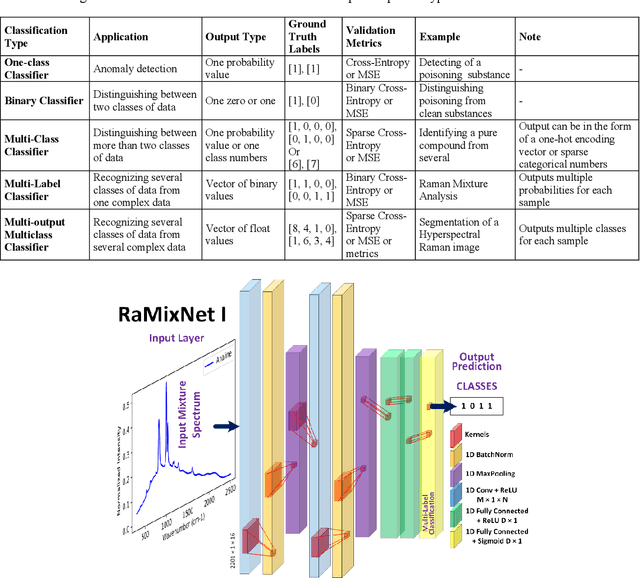Raman spectral analysis of mixtures with one-dimensional convolutional neural network
Paper and Code
Jun 01, 2021



Recently, the combination of robust one-dimensional convolutional neural networks (1-D CNNs) and Raman spectroscopy has shown great promise in rapid identification of unknown substances with good accuracy. Using this technique, researchers can recognize a pure compound and distinguish it from unknown substances in a mixture. The novelty of this approach is that the trained neural network operates automatically without any pre- or post-processing of data. Some studies have attempted to extend this technique to the classification of pure compounds in an unknown mixture. However, the application of 1-D CNNs has typically been restricted to binary classifications of pure compounds. Here we will highlight a new approach in spectral recognition and quantification of chemical components in a multicomponent mixture. Two 1-D CNN models, RaMixNet I and II, have been developed for this purpose. The former is for rapid classification of components in a mixture while the latter is for quantitative determination of those constituents. In the proposed method, there is no limit to the number of compounds in a mixture. A data augmentation method is also introduced by adding random baselines to the Raman spectra. The experimental results revealed that the classification accuracy of RaMixNet I and II is 100% for analysis of unknown test mixtures; at the same time, the RaMixNet II model may achieve a regression accuracy of 88% for the quantification of each component.
 Add to Chrome
Add to Chrome Add to Firefox
Add to Firefox Add to Edge
Add to Edge